Rearing the Crexa Moth from Egg to Adult - Genduara punctigera (Full Life Cycle - Twenty Photographs)
If you enjoy learning about the mini beasts that inhabit your backyard then you'd probably enjoy rearing moths (or other insects) from eggs or larvae. It's certainly something that I enjoy. However, due to a hard drive failure, I lost my records for literally dozens of rearing projects. I later found that some of my notes survived on a backup disk. Below is one such project, which I undertook back in 2008 / 2009. I've spent many hours today going through my photos and matching them up with the notes. By posting it here I will at least have a good backup :-) In the weeks ahead I hope to post few more rearing projects. Hopefully some of you will find them of interest.
For the photographers, the photos below were taken with a Canon 300D and Canon EF 100mm f/2.8L Macro lens.
Rearing the Crexa Moth - Genduara punctigera (Family: Lasiocampidae)
26th October 2008 A female Crexa Moth, Genduara punctigera, which had come to the moth trap was photographed, and then placed in a jar awaiting release. What I hadn't realised is that the moth proceeded to lay her eggs in the jar before being released.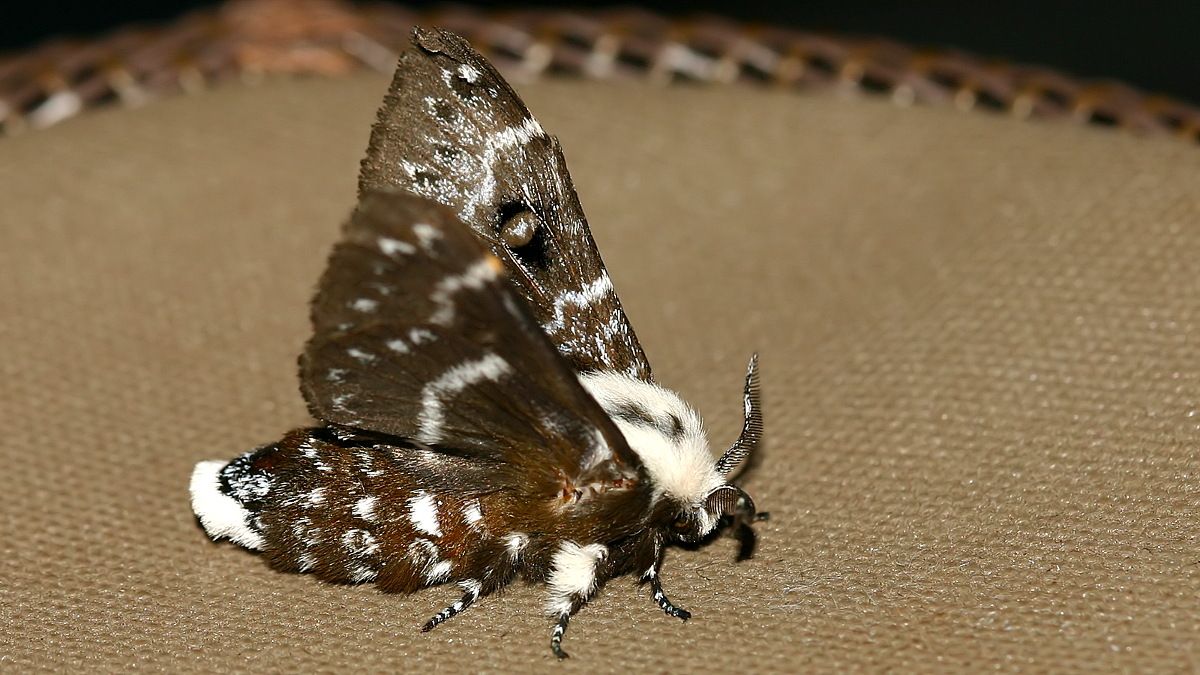
Female Genduara punctigera
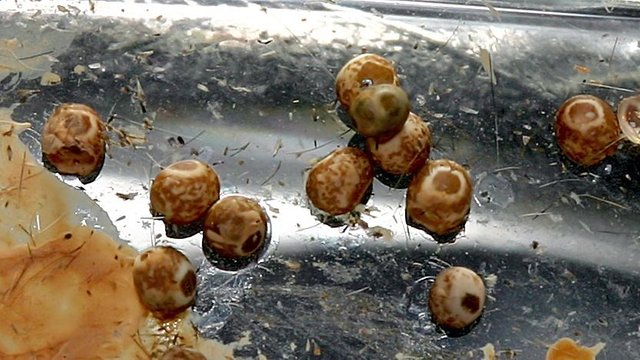
Eggs - already hatched
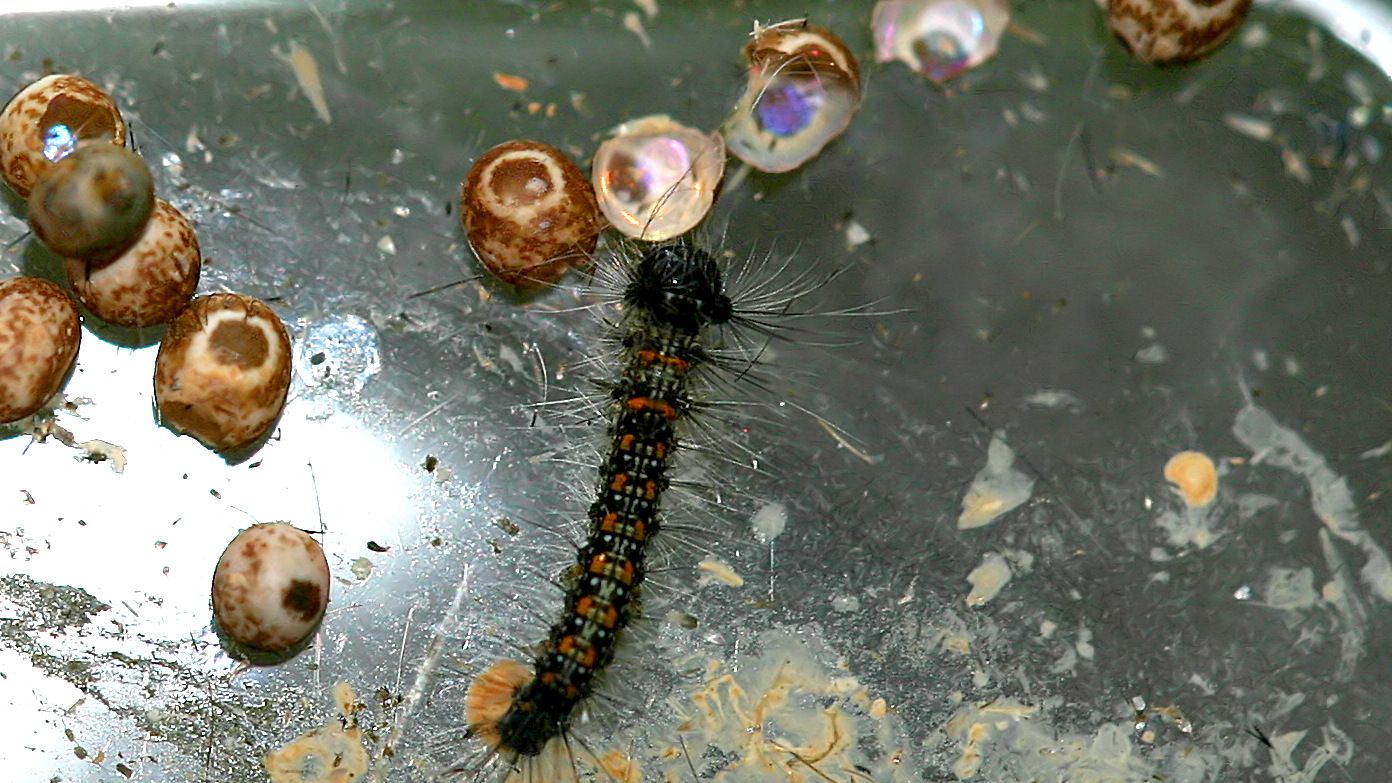
1st instar larva eating egg shells
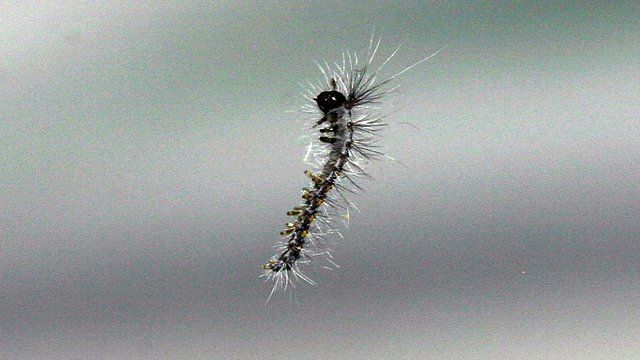
Hanging by silk thread
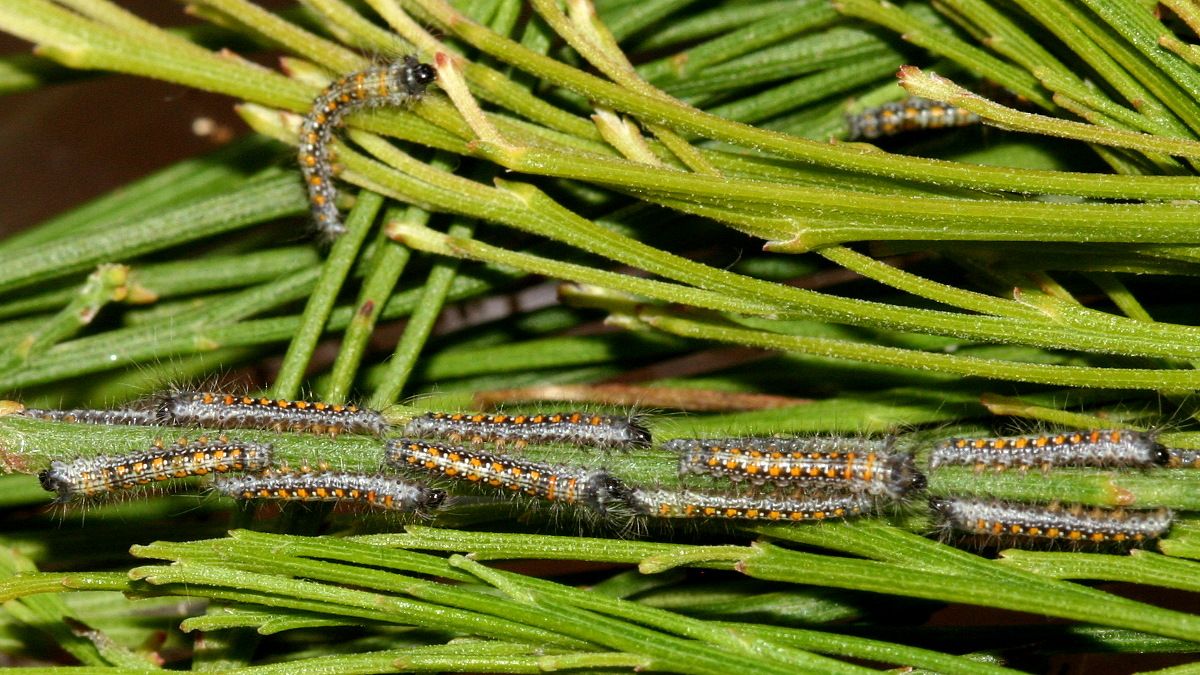
Larvae on Native Cherry
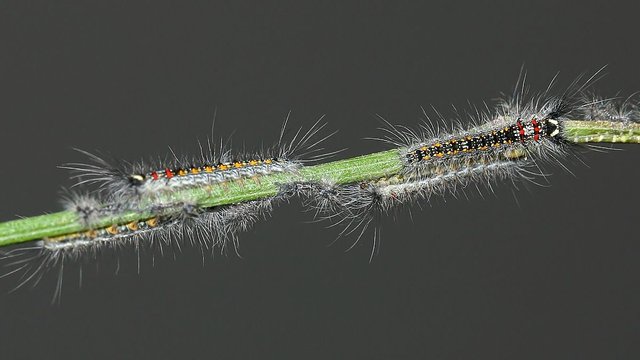
Eight days old
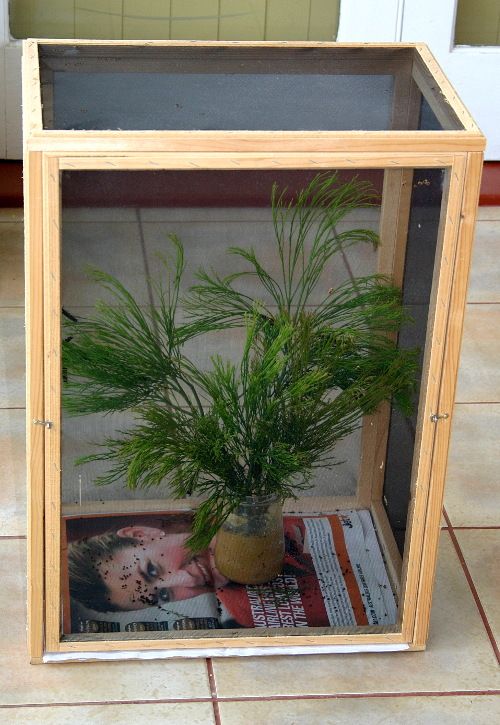
Rearing cage with food plant
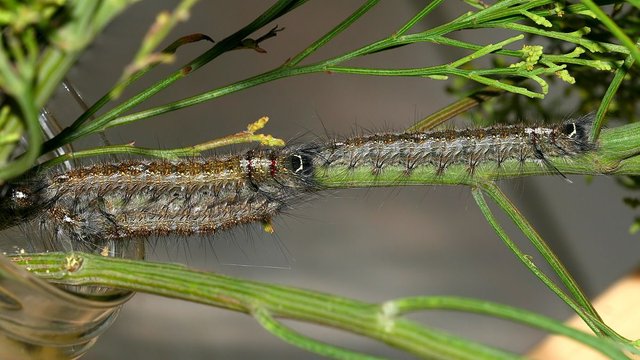
Thirty days old. (forty seven days since eggs were laid)
Now 34 days old. The larvae are quite variable in size, ranging from 28 - 45mm. One has made the first cocoon between the cage frame and some foliage. The cocoon measures 25mm in length. The larva within has not yet pupated.
Since moving the larvae into a larger rearing cage, it has also become more clear that they are primarily feeding at night. By day, most are congregating in small groups in the corners of the cages frame.
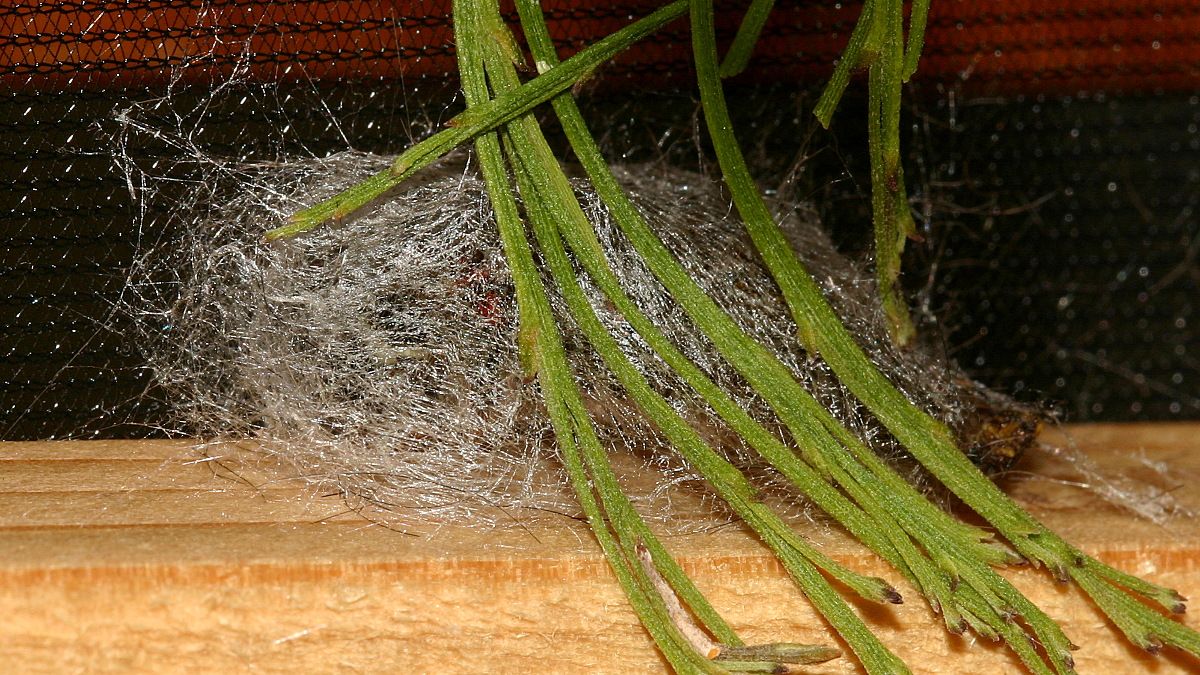
Specimen A makes the first cocoon - 34 days from hatching
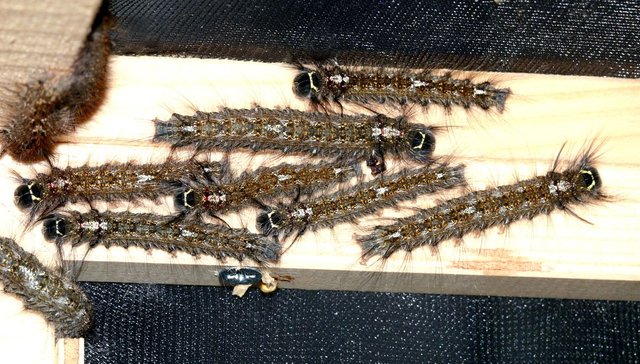
Small groups resting by day.
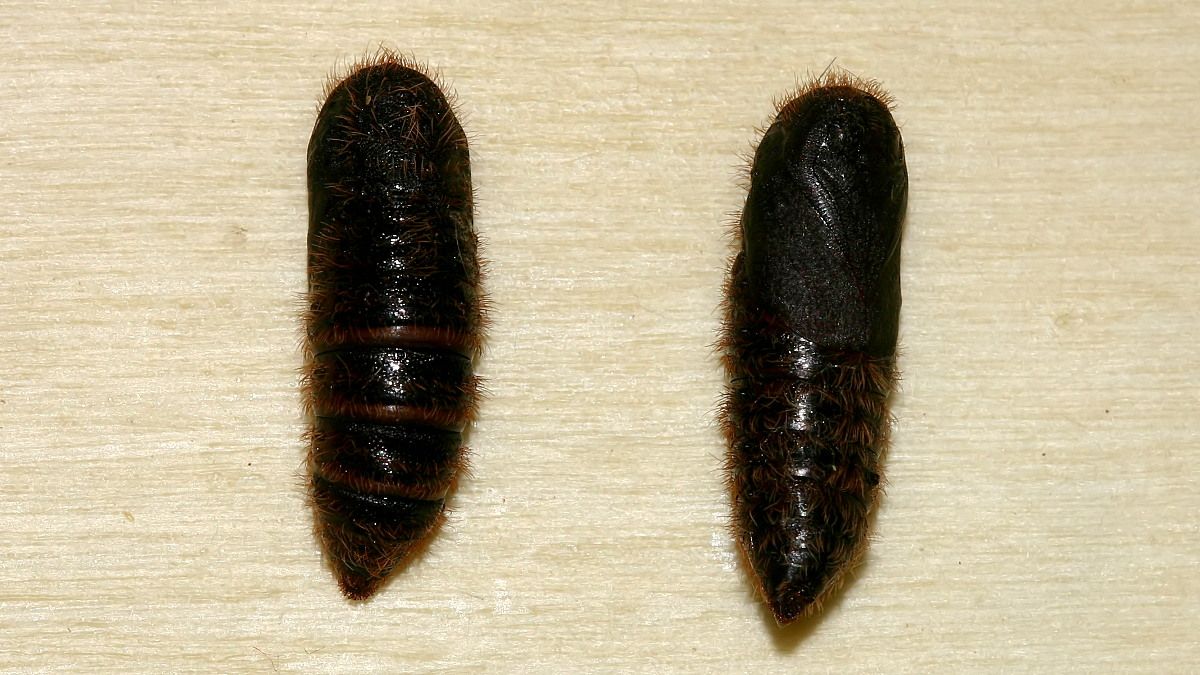
Specimen A (left) - First pupa 19mm - Specimen B (right) -Second pupa 19.5mm
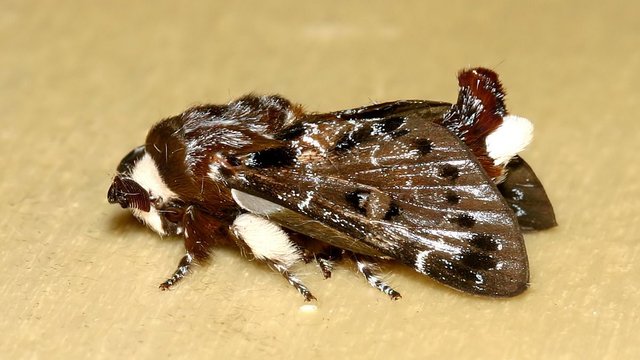
Specimen A: Male imago. Forewing 12mm
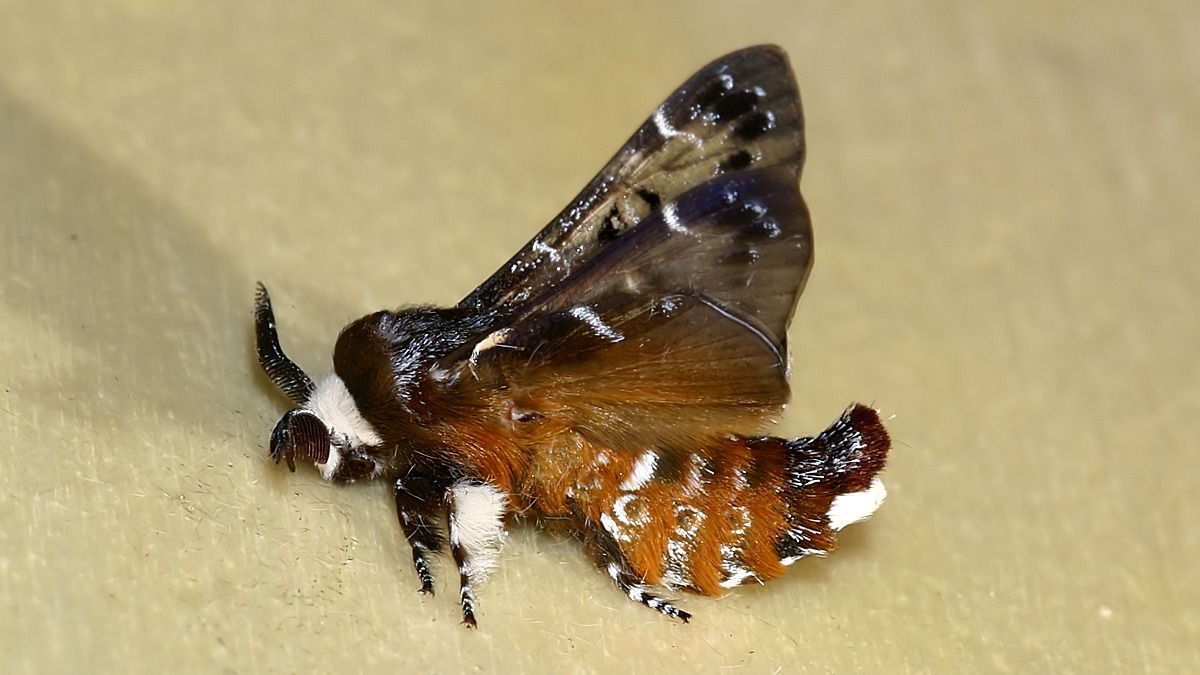
Another shot of Specimen A
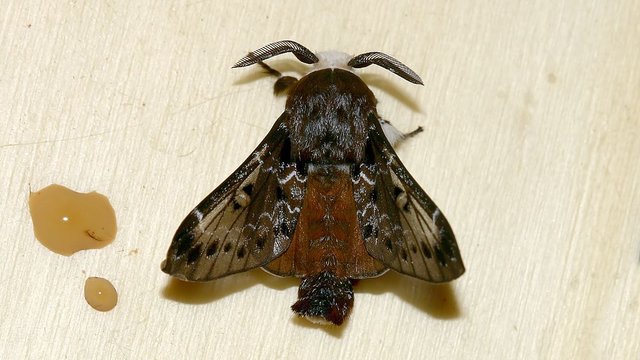
Specimen B: Male imago. Forewing 13.5mm
There are 7 pupae remaining. I've labeled these C through to I, and they appear in the photo below arranged left to right. For these I have no dates recorded as to when pupation occurred. Their lengths are:
- C: 21mm
- D: 20mm
- E: 18mm
- F: 17.5mm
- G: 17.5mm
- H: 17mm
- I: 16mm

Remaining pupae ranging from 16mm to 21mm
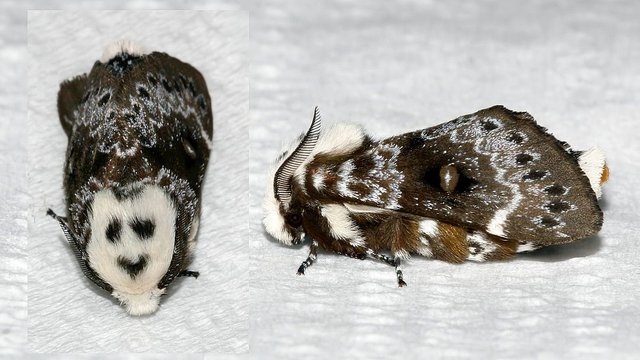
Specimen D: Female imago. Forewing 17mm
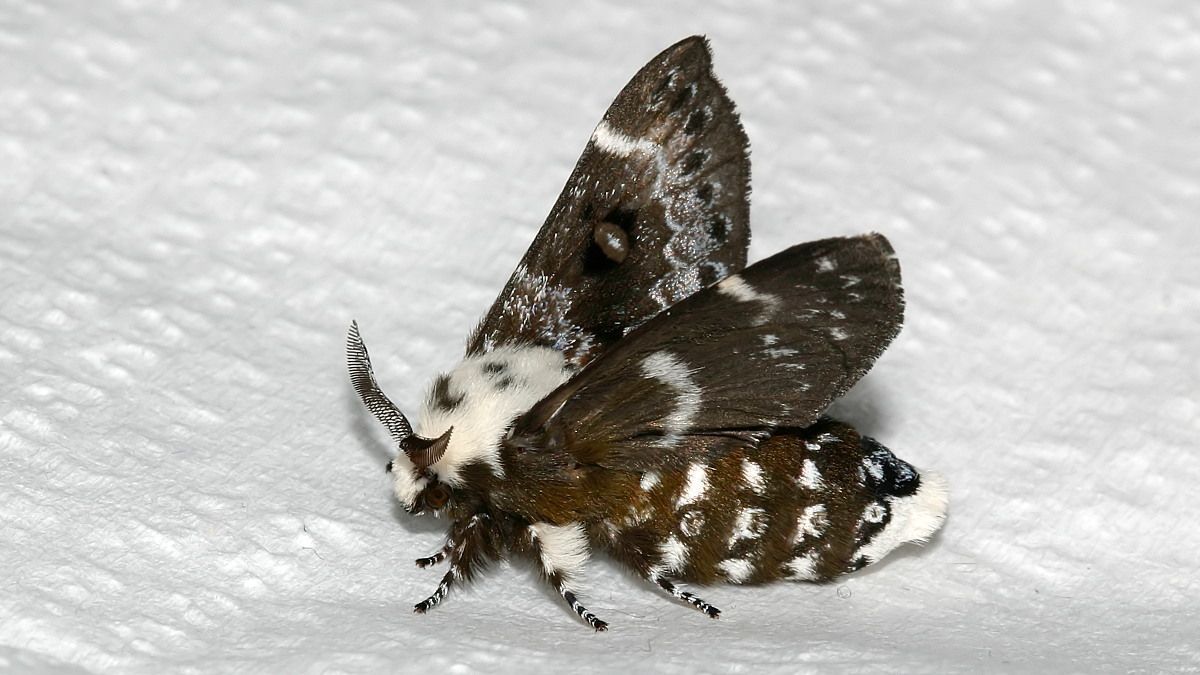
Specimen C: Female imago. Forewing 17mm
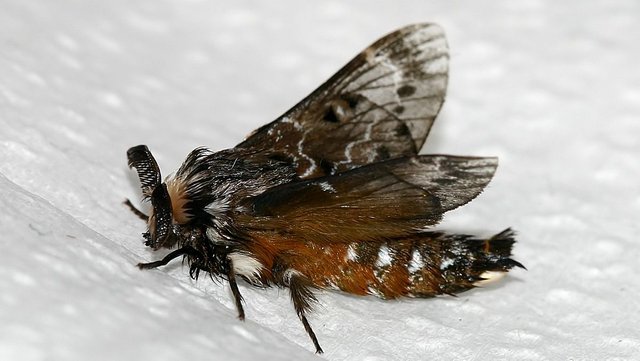
Specimen F: Male imago. Forewing 13mm
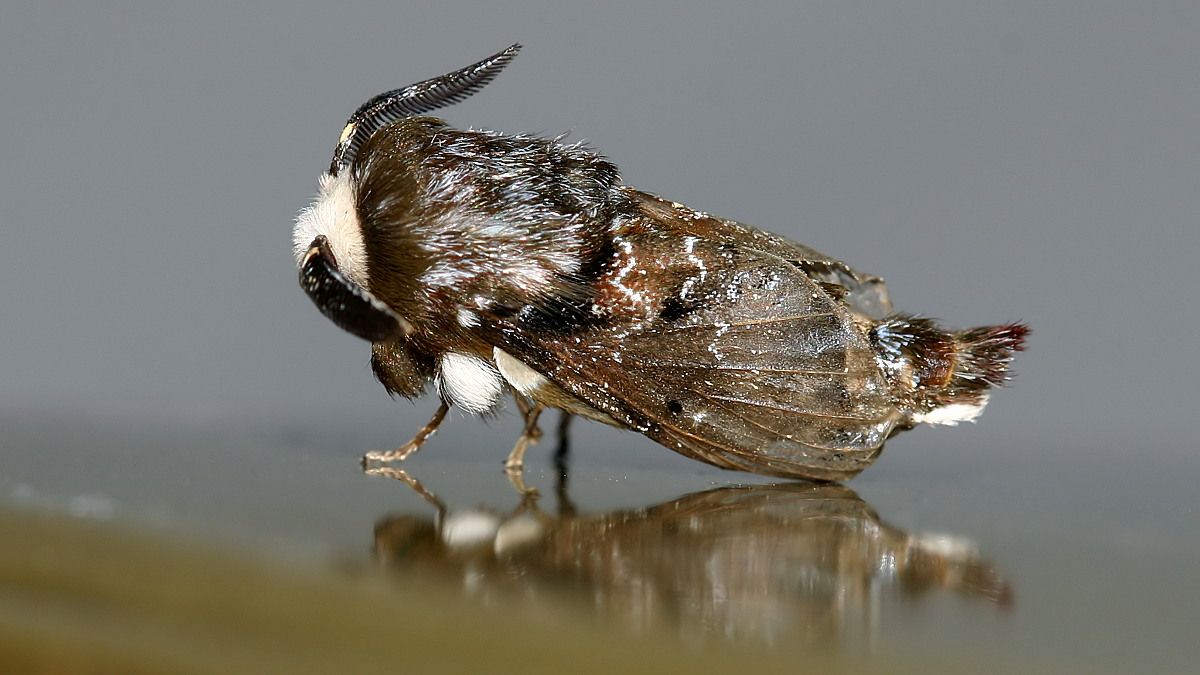
Specimen H: Male imago. Forewing 11mm
Meanwhile, specimen C, having been less than 24 hours with the male specimen F, has laid eggs. There are 24 eggs in 4 small groups of 3, 4, 8 and 9. The eggs measure about 1mm x 1.2mm.
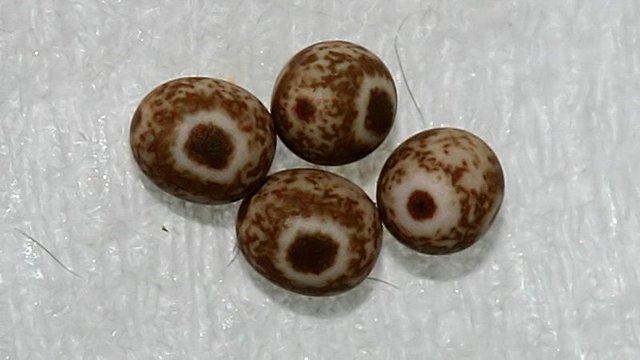
Eggs from Specimens C & F - 1mm X 1.2mm
...and so life goes on.
Summary All up, 80 days passed from the eggs being laid until the first eggs of the second generation were laid. The size of the pupae ranged from 16mm to 21mm. Emergence was spread over at least twelve days. Adult females were larger, with an average forewing length of 17mm. Male forewing length averaged 12.5mm. Further Reading:- Enjoying Moths – Roy Leverton (2001) – Poyser Natural History Books
- Breeding Butterflies and Moths - Ekkehard Friedrich (1986) - Harley Books

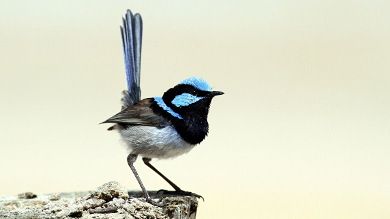
The Superb Fairywren 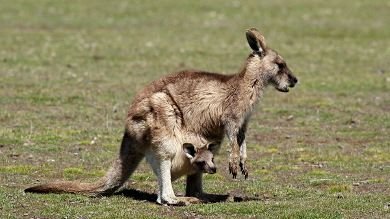
Forester Kangaroos with Baby 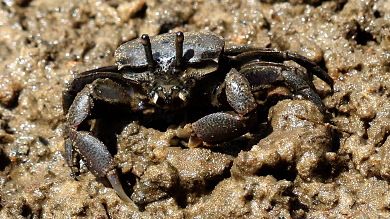
Semaphore Crabs 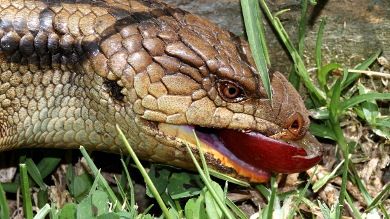
Bluetongue Lizard Eating Grapes |
I hail your research work. Such a quality post with enough picture backing. This post is surely undervalued.
I believe this post is original, @originalworks
The @OriginalWorks bot has determined this post by @mostly.nature to be original material and upvoted(1.5%) it!
To call @OriginalWorks, simply reply to any post with @originalworks or !originalworks in your message!
Thanks for the compliment. Glad you enjoyed the post.
This post has received a 1.14 % upvote from @buildawhale thanks to: @mostly.nature. Send at least 1 SBD to @buildawhale with a post link in the memo field for a portion of the next vote.
To support our daily curation initiative, please vote on my owner, @themarkymark, as a Steem Witness
I couldn't stop staring at the images and just thinking about how cool this is. It is something we all know happens but is beyond belief. I wish we knew how they change like they do. Now I want to do some research haha. Thx
Your post had been curated by the @buildawhale team and mentioned here:
https://steemit.com/buildawhale/@buildawhale/buildawhale-curation-digest-11-13-17
You have received an upvote by @officialfuzzy thanks to @akrid and Whaleshares.
Keep up the good work and original content, everyone appreciates it!